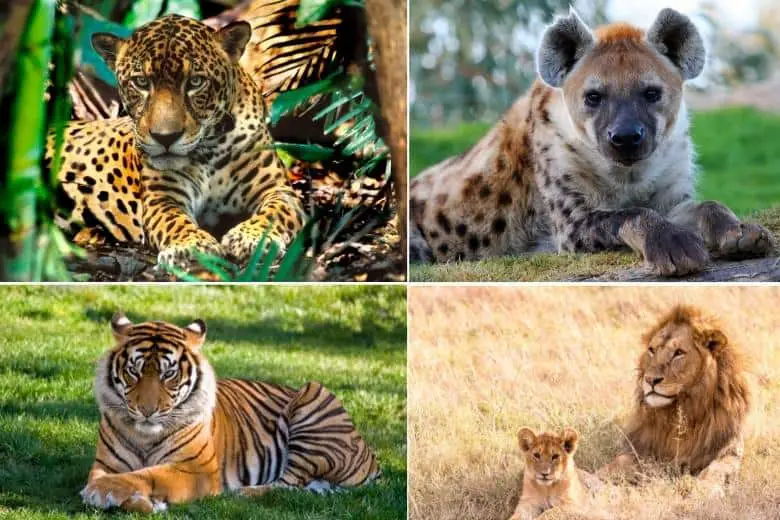When we think of animals, one of the fundamental organs that often comes to mind is the heart. It’s the powerful muscle that keeps blood flowing through the circulatory system, ensuring the delivery of oxygen and nutrients to every part of the body. However, not all creatures in the animal kingdom rely on a heart for their circulatory needs. In this article, we will delve into the fascinating world of animals that do not possess a heart, exploring their unique adaptations and survival strategies.
Animals with Hearts
The Importance of a Heart
The heart is a vital organ found in numerous animal species. It plays a crucial role in maintaining a continuous flow of blood throughout the body, enabling the transportation of oxygen, nutrients, and waste products. Mammals and birds, for instance, have highly developed hearts that efficiently pump blood through their bodies. Similarly, reptiles and amphibians possess hearts tailored to their specific physiological requirements. Even fish, although different in structure, have hearts that propel blood through their gills and bodies.
Animals with Simple Circulatory Systems
Invertebrates and Their Circulation
While many invertebrates have well-developed circulatory systems, they exhibit different strategies compared to animals with hearts. Insects and arachnids, such as spiders, utilize an open circulatory system where blood, called hemolymph, directly bathes their organs and tissues. This fluid also aids in nutrient transport and waste removal. Mollusks and echinoderms, on the other hand, rely on a system of vessels and pumps to circulate their hemolymph, showcasing diverse adaptations within the invertebrate world. Annelids, including earthworms, and nematodes, or roundworms, possess tubular hearts that aid in distributing their body fluids.
Unique Adaptations: No Hearts
Heartless Animals and Their Survival
Interestingly, some animals have evolved without a conventional heart, yet they have found remarkable ways to thrive. Let’s explore a few examples:
Flatworms
Flatworms, known scientifically as Platyhelminthes, are a diverse group of animals that include both parasitic and free-living species. Despite their lack of a heart, flatworms utilize a branching network of tubules called “flame cells” to distribute fluids and aid in the transport of necessary substances.
Sponges
Sponges, the simplest multicellular organisms, lack hearts but possess a unique water circulation system. They draw water in through specialized cells called choanocytes and expel it through openings called oscula, facilitating the exchange of nutrients, gases, and waste products.
Cnidarians
Cnidarians, encompassing jellyfish, sea anemones, and corals, exhibit a decentralized nervous system and lack a true heart. Instead, they rely on a gastrovascular cavity that functions both in digestion and distributing nutrients. Through muscular contractions, they pump water containing nutrients and oxygen throughout their bodies.
Jellyfish
Jellyfish, a subgroup of cnidarians, propel themselves through the water with the rhythmic pulsations of their bell-shaped bodies. Although they lack a centralized heart, their bodies are thin enough to allow for efficient oxygen exchange through diffusion.
Trichoplax
Trichoplax is a fascinating and enigmatic animal that lacks not only a heart but also a nervous system. It survives in marine environments, utilizing cilia to move and absorb nutrients. Trichoplax relies on simple diffusion for gas exchange and nutrient distribution within its thin, pancake-like body.
FAQs
FAQ 1: Can animals survive without a heart?
Yes, some animals can survive without a heart. They have evolved alternative mechanisms for nutrient distribution and waste removal, allowing them to thrive without this vital organ.
FAQ 2: How do animals without hearts circulate blood?
Animals without hearts rely on various methods such as diffusion, muscular contractions, and specialized cells to distribute fluids and transport necessary substances throughout their bodies.
FAQ 3: Are heartless animals considered less complex?
The absence of a heart does not necessarily indicate a lower level of complexity. Heartless animals have developed alternative strategies that suit their unique lifestyles and environments.
FAQ 4: Are there any other animals besides the ones mentioned?
Yes, there are other animals that lack a heart, such as tapeworms and other parasitic flatworms. Nature offers an astonishing array of adaptations and survival strategies.
FAQ 5: Can heartless animals be found in the ocean?
Yes, several heartless animals can be found in the ocean, including sponges, jellyfish, and various marine invertebrates. The marine environment is home to a diverse range of fascinating creatures.
Conclusion
The animal kingdom is incredibly diverse, showcasing a multitude of adaptations and survival strategies. While many animals rely on a well-developed heart for their circulatory needs, others have evolved to thrive without this organ. Through unique adaptations and alternative mechanisms, these heartless creatures demonstrate the remarkable ingenuity of nature.

